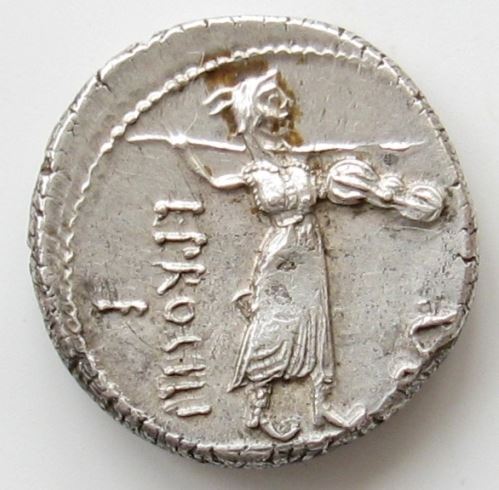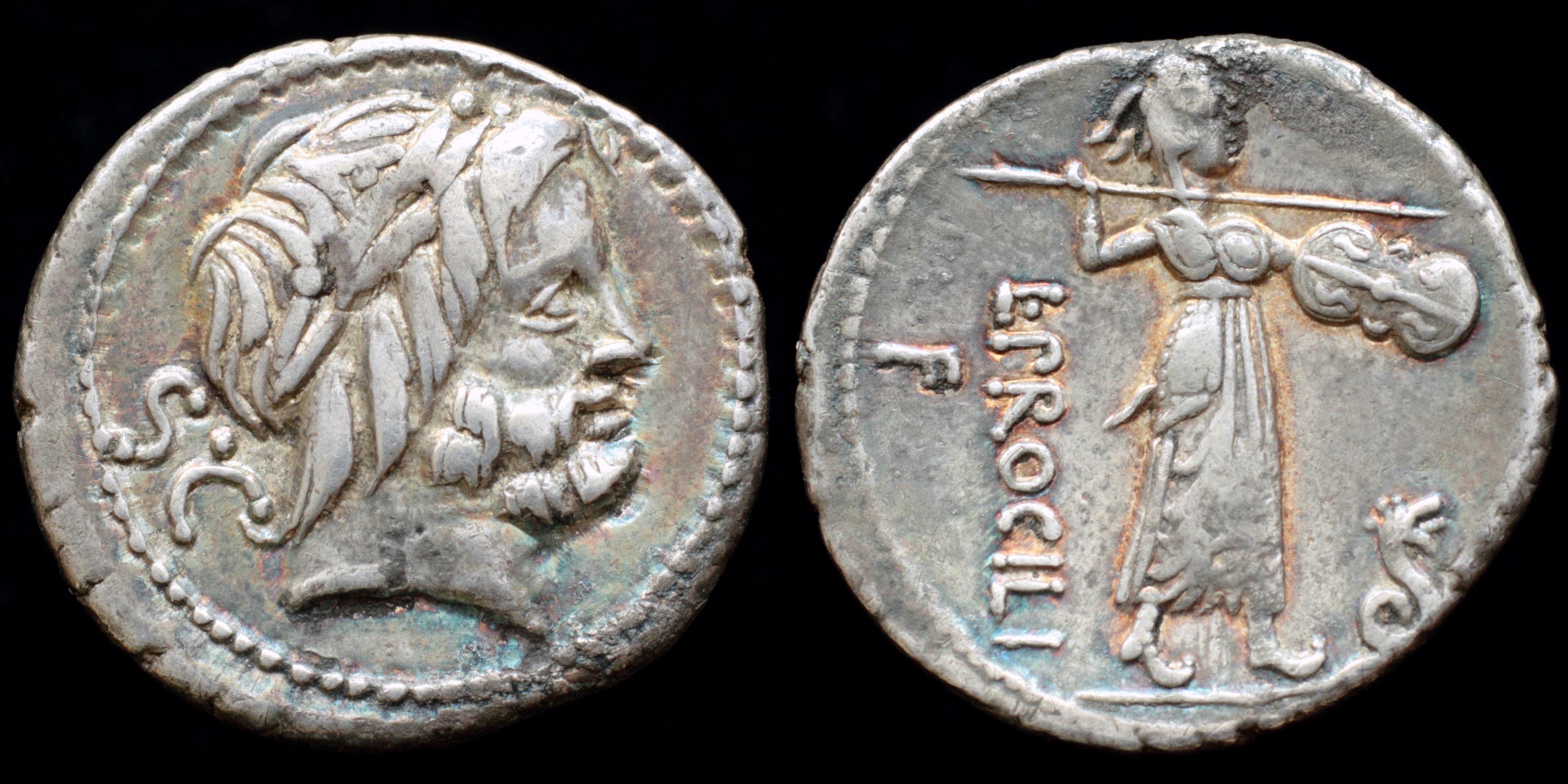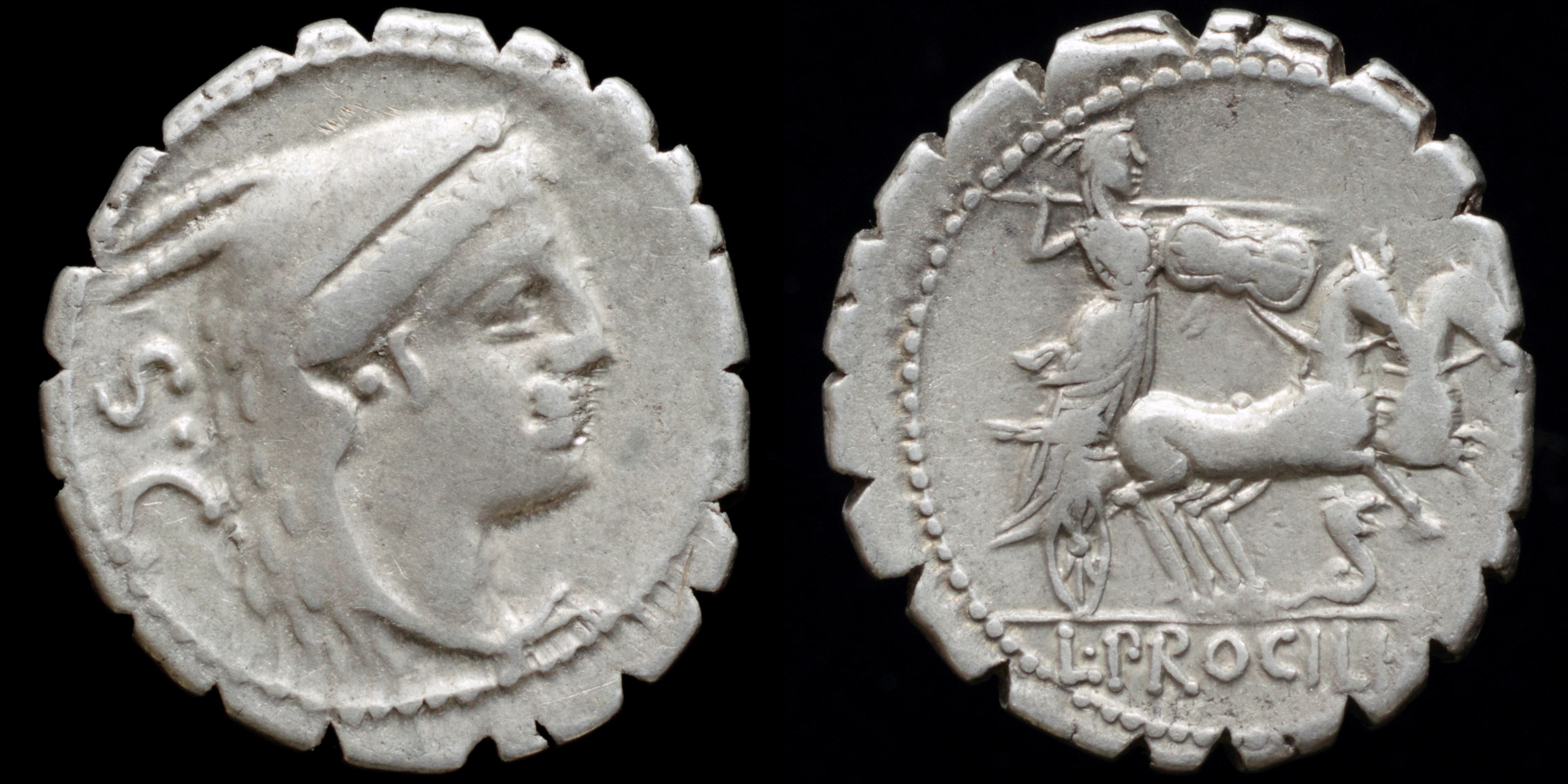Gens Procilia, sometimes written Procillia, was a minor plebeian family at ancient Rome. Members of this gens are first mentioned during the final century of the Republic, but few of them obtained any position of importance in the Roman state, and they are best known as a result of the historian Procillius, a contemporary of Cicero, whose work has been lost, but who was cited as a source by the Roman antiquarians.
The Procilii may have come from Lanuvium, an ancient city of Latium. A coin issued by the Procilii appears to allude to such an origin, depicting Juno Sospita, whose worship was centered on Lanuvium.


Reverse: Juno Sospita standing right, wearing goat skin, holding spear and shield; snake to the right, L.PROCILI / F
Die Orientation: -
Weight: 3.8 g

Reverse: Juno Sospita in biga right holding spear, reins and shield, snake below, L.PROCILI.F
Die Orientation: -
Weight: 3.9 g
Juno Sospita offered protection to women, accompanying them throughout their lives from birth to death. She was often called upon by infertile women to aid in conception. Juno Sospita had a two temples at Rome, but her most famous temple was at Lanuvium. Her statue there, as described by Cicero and as depicted on coinage, wore a goatskin coat with a goat-horned headdress. Her attribute, the serpent, inhabited a grotto near her temple, and was fed annually by a young girl, who, if a virgin, escaped unharmed, but if not, was destroyed.
